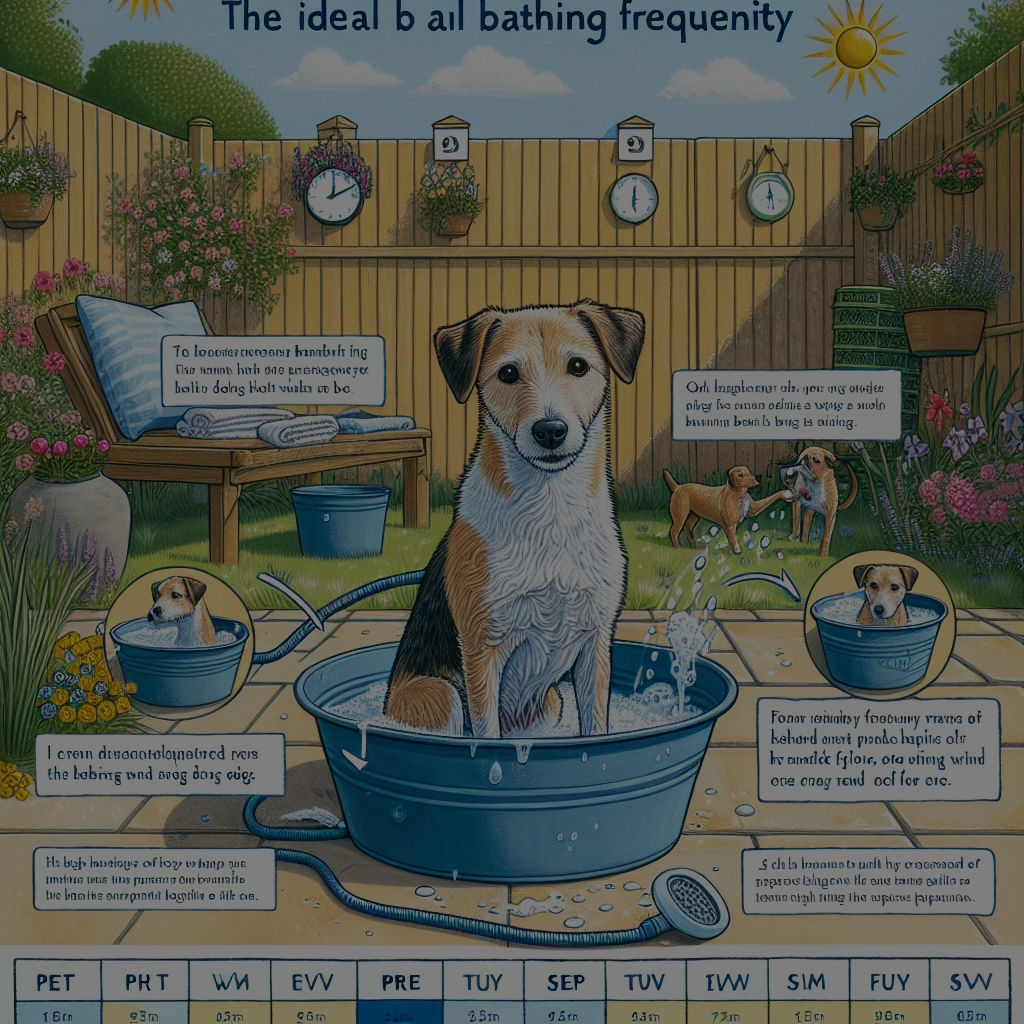
Bathing your dog is an essential aspect of pet care, but determining the ideal frequency can often be perplexing for pet owners. Too frequent bathing can strip your dog’s coat of natural oils, while too infrequent bathing can lead to skin problems and unpleasant odors. This article aims to unravel the complexities of determining the right bathing schedule based on various factors, providing a professional yet accessible guide for dog owners.
Understanding Your Dog’s Coat Type and Skin Health
The type of coat your dog has is a primary determinant of how often they should be bathed. Dogs with oily coats, such as Basset Hounds, tend to require more frequent baths, typically every one to two weeks, to manage the excessive oil and potential odor. On the other hand, breeds with water-repellent coats like Golden Retrievers need less frequent bathing, around once every six weeks, to preserve the protective oils in their fur.
Skin health is another critical factor. Dogs with sensitive or allergy-prone skin might need special shampoos and a tailored bathing schedule to prevent irritation. In such cases, consulting your veterinarian can provide personalized recommendations based on your dog’s specific needs. Regular checks for any signs of skin conditions, such as redness, flaking, or itching, can help in adjusting the bathing frequency accordingly.
Coat texture also plays a role. Dogs with double coats, like Huskies and German Shepherds, typically require less frequent bathing but more frequent brushing to remove dead hair and distribute natural oils. In contrast, dogs with single coats, such as Poodles, may need more regular baths and grooming to prevent matting and maintain their coat’s health and appearance.
Factors Influencing Bathing Frequency in Dogs
Several external factors influence how often you should bathe your dog. The dog’s lifestyle is one such factor; dogs that spend a lot of time outdoors, rolling in the dirt or swimming, will naturally require more frequent baths compared to those that mostly stay indoors. Environmental allergens like pollen and dust can also necessitate more regular bathing to relieve itching and discomfort.
Health conditions, including skin infections, parasites, and allergies, will also impact bathing requirements. Dogs suffering from such conditions may need medicated baths as part of their treatment plan. In these cases, following a veterinarian’s advice is crucial to avoid exacerbating the problem.
Seasonal changes can affect bathing frequency too. During shedding seasons, such as spring and fall, dogs may benefit from more frequent baths to help manage the shedding and promote healthy skin. Conversely, during the winter months, less frequent bathing is often recommended to avoid drying out the skin due to indoor heating and cold outdoor temperatures.
Common Bathing Guidelines for Various Dog Breeds
Toy breeds like Chihuahuas and Yorkies, with their fine fur, generally require more frequent bathing, about once every three to four weeks. Their small size means they’re closer to the ground and more prone to picking up dirt and debris on their coats. Moreover, their owners often keep them as indoor pets, in which case they might need baths less frequently.
Working breeds such as Border Collies and Australian Shepherds, which are often more active and spend considerable time outdoors, might need a bath every four to six weeks. Their natural oils help protect their skin and coat from the elements, so over-bathing can strip these necessary oils away. Regular brushing can often suffice to keep their coats clean and healthy between baths.
On the other hand, hairless breeds like the Chinese Crested or the Xoloitzcuintli require more frequent bathing, typically weekly, to maintain skin health. Their lack of fur means their skin is more exposed to environmental contaminants and can become oily or dry without regular maintenance. Special shampoos formulated for sensitive skin are often recommended for these breeds.
Recognizing Signs It’s Time to Bathe Your Dog
One clear indication that your dog needs a bath is an unpleasant odor. While dogs have a natural scent, a strong, persistent smell is often a sign that it’s time for a wash. Additionally, visible dirt or mud on their coat is a straightforward cue that a bath is in order.
Another sign is excessive scratching or licking. While occasional scratching is normal, constant irritation or the presence of dandruff or oily patches on the skin indicates that your dog might benefit from a bath. In these cases, using a gentle shampoo designed for sensitive skin can help alleviate discomfort.
Lastly, observe changes in your dog’s coat texture. If the coat feels greasy, sticky, or you notice an unusual amount of shedding, it’s likely time for a bath. Regular grooming and occasional baths can help maintain a healthy, shiny coat, reducing the risk of matting and other coat-related issues.
Determining the ideal bathing frequency for your dog involves understanding their coat type, lifestyle, and individual health needs. By paying attention to these factors and recognizing the signs that indicate it’s time for a bath, you can keep your dog clean, healthy, and comfortable. Whether you have a playful pup who loves the outdoors or a sensitive breed with special skin needs, a tailored approach to bathing will ensure your furry friend enjoys the best care possible.










